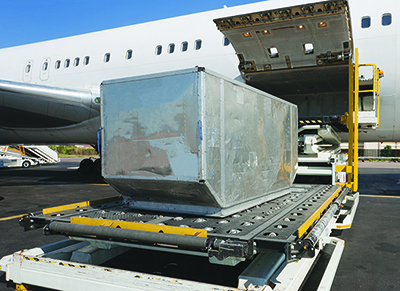Supply chain industry analysts report that the global freight forwarding market has grown by 2.7% in real terms this past year, an annual jump of 2.1% led by the back of higher air and sea volume growth.
According to the new Global Freight Forwarding 2017 report, compiled by the London-based think tank, Transport Intelligence (Ti), not all of the news is great, however.
Thanks to a continuation of excess capacity issues and lower average oil prices in 2016, rates continued to fall in both air and sea freight, meaning most forwarders reported lower year-on-year revenues.
“While air and sea volume growth picked up a bit in 2016, most forwarders experienced declining revenues on the back of substantial rate declines,” says Ti cconomist, David Buckby. “As usual in such circumstances, the fall in forwarder sell rates did not match the drop in their buy rates, leading to improved gross profit margins.
Over the medium term, Buckby expect sgrowth to pick up in line with higher global trade volume forecasts, though risks are tilted to the downside due to factors such as political uncertainty and trade protectionism.
“Real growth in the air and sea freight forwarding markets was remarkably similar globally, but this disguises significant differences across important countries and regions,” he added.
For example, air freight forwarding growth in China is thought to have been robust, while sea freight growth was much weaker. Conversely, the United States saw moderate expansion in sea freight as air freight growth faltered.
Looking ahead, the market is anticipated to grow at a real 2016 to 2020 compound annual growth rate (CAGR) of 4.1%, as global trade volume growth accelerates.
Brandon Fried, executive director, Air Forwarders Association (AfA), told SCMR in an interview that while air cargo volumes have increased, margins remain depressed and most of AfA members are looking forward to opportunities in which profitability may improve.
“One influencing factor to consider is the growth of capacity we have seen over the past couple of years, keeping pricing at lower levels,” he said. “This increase in space is attributable to the large amount of new and efficient wide-body aircraft, each with generous belly space flying the popular trade lanes.”
Another significant factor inhibiting this growth, in many cases lies with lower customer pricing agreements that may no longer reflect today’s market conditions. Once these contracts expire, prices and margin should improve overall.
“However, new transport pricing agreements alone will not assure increased profitability and this is why forwarders must be searching for more operational efficiencies that only technology can provide,” said Fried. “People still play a crucial role in our business but technology will help them work smarter and provide an improved customer experience.”
SC
MR


Latest Supply Chain News
- How CPG brands can deliver on supplier diversity promises
- How S&OP provides the answer to in-demand products
- AI, virtual reality is bringing experiential learning into the modern age
- Humanoid robots’ place in an intralogistics smart robot strategy
- Tips for CIOs to overcome technology talent acquisition troubles
- More News
Latest Podcast

 Explore
Explore
Business Management News
- How CPG brands can deliver on supplier diversity promises
- How S&OP provides the answer to in-demand products
- AI, virtual reality is bringing experiential learning into the modern age
- Tips for CIOs to overcome technology talent acquisition troubles
- There is still work to do to achieve supply chain stability
- Blooming success: The vital role of S&OE in nurturing global supply chains
- More Business Management
Latest Business Management Resources

Subscribe

Supply Chain Management Review delivers the best industry content.

Editors’ Picks





